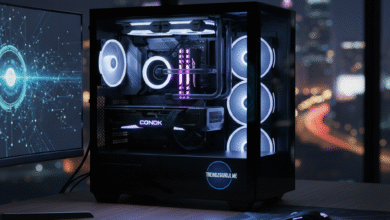The Ultimate Guide to LED Lights: Benefits, Uses, and Everything You Need to Know

LED lights have become a household name in recent years, and for good reason! They’re incredibly energy-efficient, versatile, and eco-friendly. Whether you’re lighting up your home, your office, or even the street outside, LED lights are leading the charge in modern lighting solutions. Let’s dive into everything you need to know about LED lights, from how they work to why they’ve become so popular.
What Are LED Lights?
LED, short for Light Emitting Diode, is a type of lighting technology that uses semiconductors to convert electricity into light. Unlike traditional incandescent bulbs, which rely on heat to produce light, LEDs create light through an entirely different process, making them much more efficient.
History and Evolution of LED Technology
LED technology dates back to the early 1960s when the first practical visible-spectrum LED was created. Initially, LEDs were only available in red and were used in electronic devices. Over the decades, advancements in technology allowed for more colors, higher brightness, and wider applications, eventually leading to the LED bulbs we know today.
How LED Lights Work
LED lights work by passing a current through a semiconductor, which emits photons (light). This process doesn’t generate much heat, making LEDs more efficient than incandescent bulbs, which waste energy in the form of heat.
Benefits of LED Lights
Energy Efficiency
One of the biggest advantages of LED lights is their energy efficiency. LEDs use up to 75% less energy than incandescent bulbs and last significantly longer, which means they’re a great option if you’re looking to lower your electricity bills.
Longevity
LED lights can last anywhere from 25,000 to 50,000 hours, compared to around 1,000 hours for a traditional incandescent bulb. This longevity means fewer replacements, making LED lights more convenient and cost-effective over time.
Environmental Impact
Because LED lights consume less energy, they contribute less to carbon emissions. Additionally, they don’t contain harmful chemicals like mercury, which is found in some other types of bulbs, making them safer for the environment when disposed of.
Cost-Effectiveness
While the upfront cost of an LED bulb might be higher than traditional bulbs, the savings on energy bills and the longer lifespan more than make up for the initial investment. Over time, you’ll find that switching to LEDs can significantly reduce your lighting costs.
Applications of LED Lights
LED Lights for Homes
LEDs have found their way into homes all over the world. Whether you’re looking to light up your living room, kitchen, or backyard, LED lights offer a range of options.
Interior Lighting
For interior spaces, LED lights provide everything from bright task lighting to soft ambient light. Smart LED bulbs allow you to control the brightness and color temperature, helping you set the perfect mood for any room.
Exterior Lighting
LED lights are also perfect for outdoor use, whether it’s for your porch, garden, or driveway. They’re durable and weather-resistant, making them ideal for exterior lighting solutions.
LED Lights in Commercial Spaces
LED lighting has become the go-to for many businesses, thanks to its energy savings and versatility.
Office Spaces
Bright and efficient, LEDs are a popular choice for offices. They provide consistent lighting that’s easy on the eyes and reduces energy costs for the company.
Retail Lighting
In retail settings, LED lights are used to create appealing displays that draw in customers. Their ability to adjust color temperature and intensity makes them perfect for showcasing products in the best light.
LED Lights in Industry
Industrial Facilities
Industrial settings often require bright, consistent lighting that can withstand harsh conditions. LEDs are a great fit for these environments because of their durability and low maintenance needs.
Warehouse and Storage Lighting
LEDs are widely used in warehouses due to their long lifespan and energy efficiency. They provide excellent illumination, which is critical for safety and productivity in these spaces.
LED Lights in the Automotive Industry
LEDs have revolutionized the automotive industry. They’re now used in everything from headlights to interior car lighting.
Headlights and Interior Car Lighting
LED headlights offer brighter, more focused beams than traditional headlights, making nighttime driving safer. Inside the car, LEDs can provide stylish and efficient lighting.
LED Lights in Public Spaces
Streetlights and Public Infrastructure
Cities around the world are switching to LED streetlights to reduce energy consumption and lower maintenance costs. These lights provide bright, even coverage, making streets safer while saving municipalities money.
LED Light Types and Designs
Types of LED Bulbs
There are many types of LED bulbs available, each suited to different applications.
Standard Bulbs
Standard LED bulbs can replace traditional incandescent or CFL bulbs in most fixtures, providing energy-efficient lighting for everyday use.
Smart LEDs
Smart LEDs are Wi-Fi enabled and can be controlled via a smartphone or voice assistant. You can adjust brightness, color, and even set schedules for when the lights turn on or off.
LED Strips and Tubes
LED strips and tubes offer versatile lighting options. They’re commonly used for under-cabinet lighting, accent lighting, or even as part of modern architectural designs.
Color Temperature and Brightness
Warm White vs. Cool White
LED lights come in different color temperatures. Warm white is more yellowish and is often used in living spaces for a cozy feel, while cool white is brighter and more suitable for workspaces or kitchens.
Lumens and Wattage
When choosing LED lights, it’s important to look at lumens, which measure brightness, rather than wattage. LEDs provide more lumens per watt, meaning they produce more light while using less energy.
Installation and Maintenance of LED Lights
Installation Tips for LED Lights
Installing LED lights is generally straightforward, but you should always follow the manufacturer’s instructions. For retrofitting older fixtures, you may need to check compatibility.
Maintenance and Care
LED lights require very little maintenance. Simply keep them clean and ensure they’re not exposed to extreme temperatures or moisture, which could shorten their lifespan.
The Future of LED Technology
Advancements in LED Technology
LED technology continues to advance, with new developments in efficiency and color quality. Organic LEDs (OLEDs) and micro-LEDs are just two examples of cutting-edge LED tech that promises even better performance.
The Role of LED Lights in Sustainable Energy
As the world moves toward sustainable energy solutions, LED lights are playing a key role. They use less power and last longer, making them an essential part of energy-efficient building designs.
Conclusion
LED lights have truly revolutionized the lighting industry. From homes to public spaces, they offer countless benefits, including energy efficiency, long lifespan, and environmental friendliness. Whether you’re looking to save on your electricity bill or reduce your carbon footprint, LEDs are the perfect choice.



